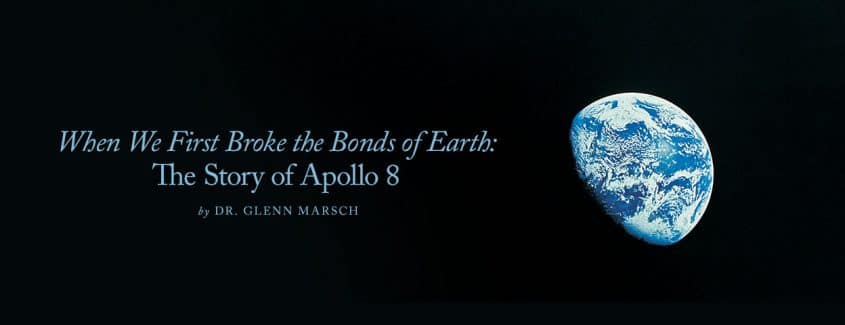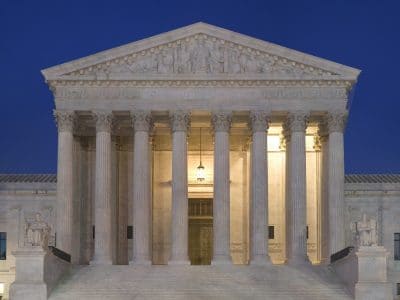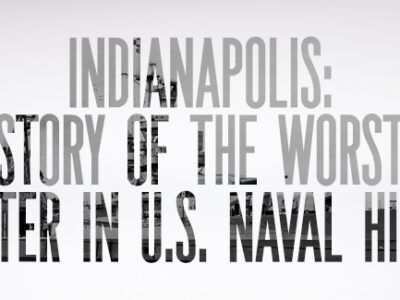
The tragic Apollo 1 cabin fire during a test in January 1967 led to the deaths of three astronauts. They were training in the command module, and an electrical fire, abetted by an oxygen-rich capsule atmosphere, quickly burned and asphyxiated the astronauts. Their deaths threatened to delay the lunar landing to beyond 1970, the deadline set by President John F. Kennedy several years before.
The command module, which the astronauts would live in during their flight to and from the moon—and in which the pilot would live in orbit while the astronauts were walking on the moon—had to be extensively redesigned and rebuilt for safety by North American Aviation. In the meantime, Grumman Aircraft was designing the lunar lander, a tricky prospect. In space flight the important issues are mass, mass, and mass—how to reduce it. The lunar module had an angular appearance because so much was cut from it in order to reduce the mass. Seats and most windows—gone. In some places the skin of the lunar lander was just 0.015 inches thick, about the thickness of a soda can. Construction of the lunar lander was behind schedule, but the redesigned command module was completed and ready for flight.
The manager for the Apollo Spaceflight Program Office was George Low, an immigrant from Austria. Low was an engineer as much as an administrator, and in many ways Apollo 8 is his story, though it is not well known today. The astronauts trusted his judgment explicitly―it was his tireless effort that made the Apollo 8 circumlunar mission possible. Originally the Apollo 8 mission was to test the docking of the lunar lander to the command module in earth orbit. But the lander wasn’t ready. Few were thinking about a flight to the moon.
But George Low was. In August 1968, Low pressed NASA for an ambitious mission all the way to the moon to test the command module, but without the lunar lander. In one shot we went from low-earth orbit all the way to the moon.
As Commander Frank Borman, James Lovell, and William Anders lifted off from Cape Canaveral December 21, 1968, they knew they were on a dangerous mission. Two and a half hours into the mission, they heard from Michael Collins, the CAPCOM: “Apollo 8: You are GO for TLI” (trans-lunar injection). The third-stage engine-burn commenced on time, accelerated the command and service modules to over 23,000 mph, and over two days later the astronauts reached the gravitational sphere of influence of the moon. They had truly left earth.
Fifty years have gone by and most of the Apollo astronauts are dead. But they accomplished what their country had tasked them to do. At that point we knew we would put boots on the moon before the Soviets did. Their visionary rocket genius Sergei Korolev was dead; their massive five-stage N-1 rocket had blown up four times. Some of those who worked for NASA saw Apollo as providing an impetus for space exploration. But many didn’t. William Anders saw his duty to beat the Russians to the moon. In the end, that mission is what supplied the funding for the Apollo program.
Apollo had political aims and was not primarily about space exploration. It was a non-violent battlefield in the Cold War, a test of geopolitical will that the United States ultimately won. Though public approval of the ambitious program generally didn’t exceed 50%, the Apollo program was briefly popular after Apollo 11, when Armstrong and Aldrin landed on the moon. It was a magnificent achievement―you’d have to be dour and sour not to be in awe of it. But NASA consumed 4.4% of GDP and it grated on a lot of people―conservatives and liberals alike―to spend that much. Now NASA spends just 0.5% of the national budget.
Many who saw Apollo as ushering in a new era of human space exploration have been disappointed. This writer is one of them. As a seven-year-old, I considered the live broadcasts of the Apollo 8 mission one of the best Christmas presents I ever got, and I remember it vividly. But there is a new class of entrepreneur, like Elon Musk and Jeff Bezos, committed to sending humans into space. Each has a different vision. But it’s their vision, and they don’t care too much about public opinion. In January 2019, SpaceX will conduct a demonstration flight of its new capsule, Dragon 2, which will loft from Cape Canaveral atop a Falcon 9 Block 5 booster. Dragon 2 is human-rated, and soon it will ferry astronauts to the International Space Station. It has been over seven years since America could launch a human being into space. Perhaps the drought will be over soon.




